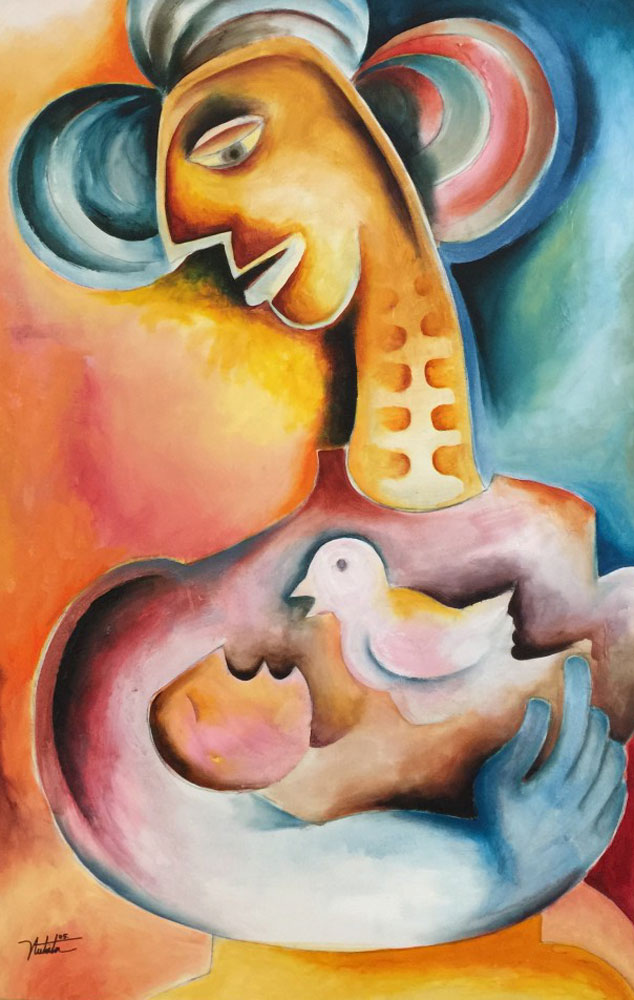Art in Romania is
generally divided into two categories: folk art/crafts and classical art. Around
Easter time, Romanians decorate hollowed out eggs and paint them with intricate
patterns. Red is a common color with other colors. Depending on the region, the
patterns and designs have a secret meaning known only to the people of that
region. Other places in Eastern Europe also take up this practice. Ceramics are
also an art form, and each region is known for a particular style.
Textile art is a
form of functional art. It not only incorporates the dying of fabric, but it
also includes other forms of weaving as well as embroidery. Romanian women use
these techniques on a variety of items like tablecloths, pillow cases, wall
coverings, and clothing. They also weave rugs with folk patterns that include
nature scenes and designs.
Masks have links to
old folk festivals and are often decorated with feathers, fabric, metallic
pieces and beads, straw, and other materials. They’re mostly designed to look
like animals. Although glass art has waned a bit, there’s been a growing
interest in blown glass art again. (Blown glass art is awesome and should’ve
never been left out in the cold like that.) Wood carving is also pretty common
as well. Gates and doorways are still pretty common areas to find these
elaborate carvings. The actual object is typically something functional, but
many of the objects carved into it are of nature: stars, flowers, trees of
life, or wolf teeth (the better to eat you, my dear).
One popular tourist
spot is the Merry Cemetery of Sapanta. It’s known for its carved and brightly
painted wooden crosses that mark the graves. They’re mainly blue. It’s actually
become almost like an outdoor museum and now contains more than 800 of these
wooden crosses. It was created by artist Stan Ioan Patras in 1935 when he
carved the first epitaph. I’m not one for being buried or for crosses, but
these are certainly cool to look at.
Painting has long
been a tradition in Romania, and many of their artists followed the trends from
the rest of Europe. Of course, like a moody teenager, the subject matter
changed throughout the years. Some painters who have been influential in
Romania’s art history include Paul Paun (surrealism, modernism), Alexandra
Nechita (cubism), Marcel Janco (art nouveau, dada, art deco, cubism,
post-impressionism), Ion Theodorescu-Sion (post-impressionism, divisionism, art
nouveau, fauvism), János Mattis-Teutsch (art nouveau, post-impressionism,
abstract art), and many others.
Romanian literature
is primarily written in the Romanian language. The earliest known copy of
anything written in Romanian is a letter (known as Neacsu's Letter) written in 1521 (still reading your
business almost 500 years later). The Eastern Orthodox Church is huge in
Romania, and its influence spread pretty far in their culture and literature.
Many of the first books written in Romanian are books published by the church.
During the time Romania was under control by the Ottoman Empire, Greek culture was introduced into their culture as well. The Greeks were well known for their epic poetry, and the Romanians developed their love songs in the style of a few choice Greek poets. Comedy was also utilized as a theme in poetry. Along with poetry, Ienăchiță Văcărescu created the first grammar book for Romanian during the 18th century.
| from Ionesco's "The Chairs" |
As talk of independence arose, so did nationalism. Literary journals and
literary circles began to form, and a push toward all kinds of genres and
styles of written works began to be published. After WWI, Romanian writers
really started developing the novel, entering them in the Golden Age. A few writers
who gained notoriety during this time include Mihail Sadoveanu, Tristan Tzara, and
George Bacovia. After WWII, the literary scene still grew, even during the
Communist years to an extent. Marin Preda is one novelist who is often
considered one of the more important writers after WWII. Poetry and theatre
were two genres that still had quite a push. Eugène Ionesco is one of the more
prominent playwrights known for his contributions to the Theatre of the Absurd.
I think he’s probably most known for his play called “The Chairs.”
Up next: music and dance




No comments:
Post a Comment